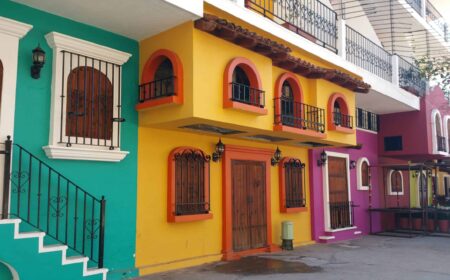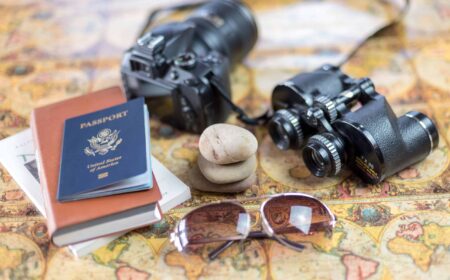Rising from the tidal flats of Normandy like a mirage, Mont Saint-Michel has captivated pilgrims, warriors, and travelers for over a millennium. Its Gothic spires and weathered stone walls seem to defy time itself, perched on a rocky island that becomes a peninsula at low tide. When my partner and I embarked on our 2016 European tour, this UNESCO World Heritage Site was at the top of our list. Little did we know that our visit would intertwine awe-inspiring history with the modern reality of mass tourism—a duality that defines Mont Saint-Michel today.
Our journey began at Charles de Gaulle Airport, where we picked up a rental car and set off on the 385-kilometer drive to Normandy. The route, while lacking dramatic scenery, offered a glimpse into France’s pastoral heartland. Rolling fields, apple orchards, and half-timbered villages dotted the landscape, reminiscent of the Canadian countryside but steeped in a deeper historical narrative. The road to Mont Saint-Michel traces paths once walked by medieval pilgrims. Since the 8th century, travelers have ventured here to honor the Archangel Michael, who, according to legend, appeared to Bishop Aubert of Avranches in 708 AD, instructing him to build a sanctuary on the island. By the 12th century, the site had become a major pilgrimage destination, part of the “Paths of Paradise” network leading to Santiago de Compostela. Modern travelers, however, trade dusty trails for France’s efficient (if costly) toll highway system. The €30 in tolls we paid paled in comparison to the perils medieval pilgrims faced—bandits, shifting tides, and disease. Today, the A13 and A84 highways streamline the trip, passing near historic towns like Rouen, where Joan of Arc was martyred, and Caen, home to William the Conqueror’s abbeys.
After four hours of driving, the monotony of farmland gave way to an electrifying sight: Mont Saint-Michel emerging on the horizon, its silhouette framed by the vast Normandy sky. For a moment, it felt as though we’d slipped into a fairy tale. The abbey’s spire, crowned by a gilded statue of Saint Michael slaying a dragon, pierced the clouds—a testament to medieval ambition and faith. Constructed between the 10th and 16th centuries, the abbey is a layered masterpiece of Romanesque and Gothic architecture. Its construction defied logic: granite blocks were hauled by hand from the nearby Chausey Islands, and the entire structure rests on a foundation of wooden piles driven into the sand. During the Hundred Years’ War, its imposing ramparts withstood a 30-year English siege, solidifying its reputation as an impregnable fortress.
Our medieval reverie soon collided with 21st-century logistics. The approach to Mont Saint-Michel revealed a stream of cars and tour buses—a far cry from the solitary pilgrims of yore. To protect the bay’s fragile ecosystem, a sprawling parking lot (€11.70/day) now sits 2.5 kilometers from the island, with shuttle buses ferrying visitors closer. The 15-minute ride offered panoramic views of the bay, where the world’s highest tides surge up to 14 meters, transforming the seascape twice daily. Since its designation as a UNESCO site in 1979, Mont Saint-Michel has drawn over 2.5 million annual visitors. The once-silent abbey now hums with voices in a dozen languages. As we stepped off the shuttle, we were swept into a throng of tourists snaking through the fortified entrance. The main street, Grande Rue, felt like a medieval theme park: souvenir shops peddled plastic knights, heraldic keychains, and “authentic” Norman cider, while creperies and cafés spilled onto cobblestone lanes.
Beyond the commercial bustle, the abbey remains the soul of Mont Saint-Michel. Climbing the steep, winding path to its entrance, we passed timber-framed houses dating to the 15th century, their façades adorned with geraniums. The abbey’s cloisters, refectory, and chapels whispered tales of Benedictine monks who once lived here in contemplative silence. In the La Merveille (The Wonder), a 13th-century three-story complex, we marveled at the Gothic rib-vaulted halls illuminated by sunlight streaming through arched windows. The cloister, with its double row of delicately carved columns, was designed to evoke heavenly harmony. Yet even here, modernity intruded: smartphone-wielding tourists jostled for selfies, while guides barked anecdotes in French, English, and Mandarin.
Lunch proved a challenge. Restaurants touted nearly identical menus of moules-frites (mussels and fries), omelettes (a local specialty), and galettes (savory buckwheat crepes), all priced at a premium. We later learned that most businesses are operated by a handful of families, a tradition rooted in the abbey’s monastic past when lay brothers managed guesthouses for pilgrims. The commercialization of Mont Saint-Michel is not new. Medieval pilgrims purchased tin badges as proof of their journey—the ancestors of today’s fridge magnets. Yet the scale has escalated. In 2016, the French government launched a €200 million project to restore the bay’s natural hydrology, replacing a causeway with a bridge to let the tides flow freely. While this ecological effort is laudable, it has done little to stem the human tide.
Determined to escape the crowds, we veered off the main thoroughfares onto narrower paths. Behind the abbey, the Rampe du Nord offered sweeping views of the bay, where sheep grazed on salt marshes—a scene unchanged for centuries. In the village’s quieter alleys, we discovered hidden gardens, a 14th-century parish church, and plaques recounting the island’s role in World War II (it was liberated by Allied troops in 1944). For those seeking solitude, it’s advisable to visit early or late in the day to avoid peak crowds, check tidal charts to witness the island’s dramatic transformation, or opt for evening tours when day-trippers depart and the abbey is bathed in golden light.
As we boarded the shuttle back to our car, I reflected on Mont Saint-Michel’s dual identity. Yes, it’s crowded, commercialized, and at times overwhelming. Yet it’s also a place where history feels palpably alive—where the stones underfoot have borne the weight of kings, soldiers, and dreamers. In the words of Victor Hugo, “Mont Saint-Michel is to France what the Pyramids are to Egypt.” It is a monument to human ingenuity, faith, and the inexorable passage of time. For all its tourist trappings, the island remains a symbol of resilience, having survived wars, revolutions, and the relentless sea.
Our visit to Mont Saint-Michel was a reminder that great beauty often comes with crowds. Yet beneath the postcard racks and clamor, the magic endures. Whether you come for history, architecture, or simply to stand where centuries collide, this island fortress will leave an indelible mark—just as it has on countless souls before. As the tides erase footprints in the sand, Mont Saint-Michel stands eternal, inviting us to glimpse the sublime… if we’re willing to share it with the world.






